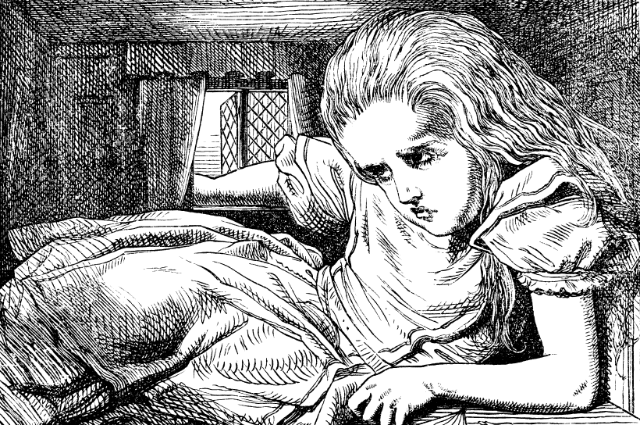Alice in Wonderland Syndrome (AIWS) is a rare neurological condition that affects perception. It is characterized by distortions in visual perception, body image, and the perception of time. The syndrome is named after Lewis Carroll's famous novel "Alice's Adventures in Wonderland," as some of the perceptual disturbances experienced by individuals with AIWS resemble the surreal and distorted world depicted in the story.
The connection between AIWS and the actual story of Alice in Wonderland lies in the similarities of the perceptual distortions experienced by individuals with the syndrome and the bizarre, fantastical world that Alice encounters in her adventures. In the story, Alice often experiences changes in her body size, perception of space, and time. These changes parallel the perceptual disturbances experienced by individuals with AIWS.
For example, Alice's sudden changes in size, where she shrinks and grows uncontrollably, echo the perceptual distortion known as macropsia and micropsia, where objects or body parts appear larger or smaller than they actually are. Additionally, Alice's encounters with talking animals and objects that come to life reflect the hallucinatory experiences that some individuals with AIWS may have.
It is important to note that AIWS is a medical condition, while Alice's adventures in the story are fictional. The connection between AIWS and the story is primarily based on the shared theme of perceptual distortions and the surreal nature of the experiences.
People with AIWS may experience various perceptual distortions, including changes in body image, altered perception of size and distance, and distorted perception of time. These distortions can manifest as:
- Micropsia: Objects or body parts appear smaller than they actually are.
- Macropsia: Objects or body parts appear larger than they actually are.
- Metamorphopsia: Objects may appear distorted or warped in shape.
- Pelopsia: Objects may appear closer than they really are.
- Teleopsia: Objects may appear farther away than they really are.
- Time distortion: The perception of time passing either too quickly or too slowly.
The exact causes of Alice in Wonderland Syndrome (AIWS) are not fully understood. However, several factors have been proposed as potential contributors to the development of this condition. These include:
Migraines:
AIWS is commonly associated with migraines, and it is believed that the perceptual disturbances experienced in AIWS may be related to the abnormal brain activity that occurs during a migraine episode. Migraines can affect the visual cortex and result in alterations in perception and sensory processing.
Infections:
In some cases, AIWS has been reported to occur alongside viral infections such as Epstein-Barr virus, cytomegalovirus, and infectious mononucleosis. The connection between these infections and AIWS is not fully understood but may involve inflammatory processes affecting the brain.
Epilepsy:
AIWS has also been observed in individuals with epilepsy, particularly in cases where seizures affect the temporal lobe. Seizures in the temporal lobe can disrupt the normal processing of sensory information and lead to perceptual distortions.
Brain lesions or abnormalities:
Structural abnormalities or lesions in the brain, such as tumors or vascular malformations, have occasionally been associated with AIWS. These abnormalities can interfere with the normal functioning of the brain regions involved in perception.
Medications and substances:
Certain medications and substances have been reported to trigger AIWS-like symptoms in some individuals. These include antiepileptic drugs, psychoactive substances, and sleep aids. The mechanisms through which these substances cause perceptual disturbances are not well understood.
While the exact cause of AIWS is still not fully understood, it is believed to be associated with abnormal electrical activity in the brain's visual areas. It can occur as a primary condition or as a symptom of other underlying conditions such as migraines, epilepsy, or infections.
It is worth noting that Lewis Carroll himself was known to have migraines and may have drawn inspiration from his own experiences with perceptual disturbances in real life.

